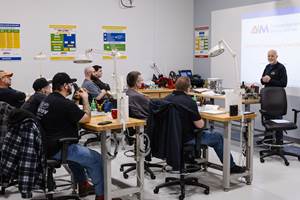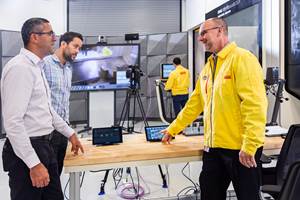Identifying and Examining Training Constraints
Finding, Training & Retaining Employees, Part 13
When conducting a training needs analysis, it is important to examine any potential roadblocks that may stand in the way of a successful training program. These roadblocks are commonly referred to as training constraints, and here are three of the most common that must be overcome in order to achieve an effective program.
Budget
The training budget often is the largest constraint that companies encounter, but not in the way one might think. Although most companies acknowledge the need for training and that there is a cost associated with training, they often fail to put a training plan in place because they struggle with even setting an appropriate training budget. Many shop owners and managers fear they will spend too much and not obtain a reasonable return on their investment. As a result, there often is no training at all.
To overcome this constraint, companies can draw from some standards used in other industries. For example, some companies set an annual training budget that is 2 percent of their annual total employee wages. Others use 1 percent. Use whichever figure makes more sense for your business. The key is to set a number and commit to it.
Time
Time usually is the second largest constraint, because in a job shop environment, production highs and lows make developing, scheduling and executing training daunting tasks. As such, many employees also view training negatively, so it is essential for management to address this head-on with firm leadership. This constraint can only be overcome if the solution comes straight from the top, with the highest-level managers and owners mandating training.
Communication
The final major training constraint is communication. Train-ing goals cannot be achieved without effective communication. Every person in the organization should be made to understand the purpose and goal of any training prior to that training’s development. Essentially, effective communication comes down to whether or not the organization understands the expectations of the training.
Supervisors must know what to expect from subordinates after the training is complete, and, on the flip-side, the trainees must know what will be expected from them. All training expectations must be completely understood by every stakeholder connected to the training event—and that comes down to robust communication at all levels.
Although these three are not the only constraints to successful training, companies that work to address and overcome them before developing a training program will be well on their way to success.
Related Content
MMT Chats: The Science of Moldmaking, Part 2
In Part 2 of this two-part MMT Chat, Christina and Don continue their conversation by exploring lean manufacturing and tips on how to attract, train and retain the future workforce.
Read MoreTackling a Mold Designer Shortage
Survey findings reveal a shortage of skilled mold designers and engineers in the moldmaking community, calling for intervention through educational programs and exploration of training alternatives while seeking input from those who have addressed the issue successfully.
Read MoreMold Maintenance Continues to Matter: Enhanced Training Program in a New Facility
I attended a MoldTrax mold maintenance workshop in 2019 and shared my experiences, and despite changes in ownership, the workshop's remarkable value endures, as discussed in a recent Q&A with the current leadership.
Read MoreHow to Use Continuing Education to Remain Competitive in Moldmaking
Continued training helps moldmakers make tooling decisions and properly use the latest cutting tool to efficiently machine high-quality molds.
Read MoreRead Next
Evaluating Training Resources
Finding, Training & Retaining Employees, Part 12
Read MoreFinding, Training & Retaining Employees
In this multi-part series of articles, contributor Ryan Pohl, a journeyman CNC machinist who also holds a master's degree in industrial training and development, addresses the skilled-labor shortage and its potential to dramatically hinder the future sustainability and growth of the moldmaking industry.
Read MoreHow to Use Continuing Education to Remain Competitive in Moldmaking
Continued training helps moldmakers make tooling decisions and properly use the latest cutting tool to efficiently machine high-quality molds.
Read More
























